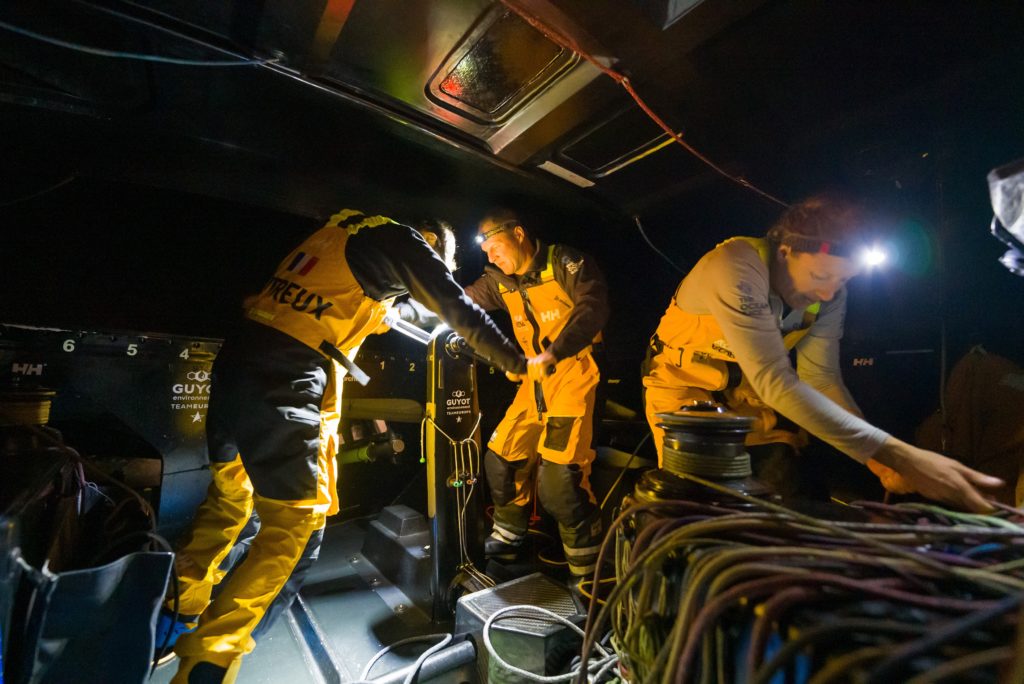Gibraltar lies astern, the first three days of The Ocean Race since the start in Alicante has the GUYOT environnement – Team Europe in the wake. And it was strains on these 700 nautical miles of the altogether 1900 nautical miles long stage to Cabo Verde, which went to the load limit of humans and material. Ever since the black yacht put its bow into the storm in the Alborán Sea, the western part of the Mediterranean, there has not been a moment to rest. In the sea funnel to the Strait of Gibraltar, the wind and waves raged. To avoid exposing the yacht to the most brutal conditions, the crew led by skipper Benjamin Dutreux and co-skipper Robert Stanjek chose a northerly route in the barren shelter of the Iberian Peninsula. This, however, required a lot of maneuvering on the upwind course all the way into the Atlantic. From Almeria to Tarifa at the exit of the Strait of Gibraltar, the crew set 26 tacks – each one involving intensive work to turn the bow through the steep and high waves.
For more than eight hours, the headwind whipped across the deck at 40 to 50 knots, peaking at 58 knots (107 km/h). The GUYOT environnement – Team Europe was not spared damage: The two top battens in the mainsail broke, and there was a cut between the second and third reef of the mainsail. Only with storm jib and with the third reef in the mainsail the team fought its way through the storm.
After about two days of racing since Alicante, the Atlantic was reached and the yacht was able to set course southwest with the last tack west of Tarifa. However, due to the sail damage, the performance was initially subdued. With the third reef in the mainsail, the French-German team was clearly underpowered compared to the competitors. So the first chance for repair was taken when the traffic separation zone off the Strait of Gibraltar, the busiest strait in the world, was passed: from a large spare batten, the crew sawed two spare battens for the top of the mainsail. After the bulky cloth had been fetched on deck to change the battens, the crew initially continued under foresail only, and later finally with the mainsail out again. But since the cut in the sail could not yet be repaired in the flying spray, the team had to wait a moment for the wind to drop a bit. This finally came at 2 o’clock on Tuesday morning. With the wind speed under 20 knots, the sail was taken in again and Annie Lush set the repair tape. Then, finally, under the best possible sails, they set off in pursuit of the runaway competition – with the hope that the tape would hold all the way to Cabo Verde. The five on board have not let their optimism and fighting spirit be taken away. Looking ahead, they see if there is still a minimal chance to attack.


